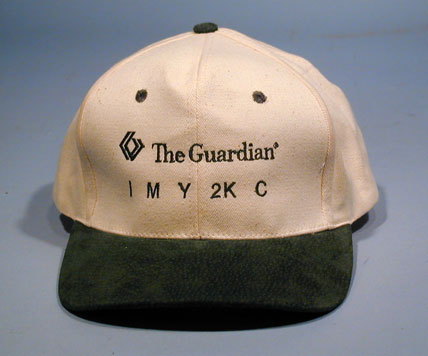As COVID-19 deaths spiked in 2020, Suzanne Firstenberg’s public art installation "In America: How could this happen…"
History Explorer Results (24)
Related Books (1)

Grade Range:
6-12
Resource Type(s):
Reference Materials, Interactives & Media
Date Posted:
3/9/2016
Through innovative ideas and inventions, computer pioneers transformed the ways people worked, played, and communicated in the 1900s.
In this video series, learn about 6 pioneers in computing.

Grade Range:
Resource Type(s):
Artifacts
Date Posted:
5/4/2018
In the fictional universe of George Lucas' Star Wars films, robots called droids (short for android) come in many shapes and serve many purposes. Two droids--R2-D2 and C-3PO--have won enormous popularity for their supporting roles in all six of the series. In the collections of the museum are cos

Grade Range:
K-12
Resource Type(s):
Artifacts, Primary Sources
Date Posted:
12/31/2009
In the early days of electronic computers, memory was not as efficient or inexpensive as it is today. To save memory space, programs stored as few digits as possible for dates. In COBOL, for instance, January 1, 1999, was stored as 010199. As Year 2000, or Y2K for short, approached, it became app

Grade Range:
K-12
Resource Type(s):
Artifacts
Date Posted:
12/30/2020
Amber Melton made this robot at CompSciConnect, a University of Maryland camp. When few girls signed up for the university’s computer science classes, Dr. Jan Plane realized that something in the high schools wasn’t working. So she created a camp for middle schoolers to excite them about compute

Grade Range:
K-12
Resource Type(s):
Artifacts, Primary Sources
Date Posted:
3/12/2012
In 1976, computer pioneers Steve Wozniak and Steve Jobs began selling their Apple I computer in kit form to computer stores. A month later, Wozniak was working on a design for an improved version, the Apple II. They demonstrated a prototype in December, and then introduced it to the public in Apr

Grade Range:
K-12
Resource Type(s):
Artifacts, Primary Sources
Date Posted:
11/17/2008
The Blackberry is a handheld wireless Personal Data Assistant (PDA) and communication device. It has a thumb keyboard and a wheel for navigation, as opposed to using a stylus like its competitors. This unit was owned by a law firm partner who arrived at the World Trade Center on September 11, 200

Grade Range:
K-12
Resource Type(s):
Artifacts, Primary Sources
Date Posted:
8/10/2009
Introduced in 1959, the Xerox 914 plain paper copier revolutionized the document-copying industry. The culmination of inventor Chester Carlson's work on the xerographic process, the 914 was fast and economical. One of the most successful Xerox products ever, a 914 model could make 100,000 copies

Grade Range:
K-12
Resource Type(s):
Artifacts, Primary Sources
Date Posted:
12/31/2009
As the “Millennium Bug” gained media attention, some businesses used the hype to market special millennium foods. From cars to breakfast cereal, companies like the Figueroa Brothers, Inc., cashed in on the Y2K name. This bottle once contained Y2K Millennium Meltdown ¿R-U-Ready? hot sauce, a

Grade Range:
K-12
Resource Type(s):
Artifacts, Primary Sources
Date Posted:
11/10/2008
The ENIAC was a large, general-purpose digital computer built to compute ballistics tables for U.S. Army artillery during World War II. Occupying a room 30 feet by 50 feet, ENIAC—the Electrical Numerical Integrator and Computer—weighed 30 tons and used some 18,000 vacuum tubes. It could compu

Grade Range:
K-12
Resource Type(s):
Artifacts, Primary Sources
Date Posted:
9/3/2008
The Nintendo Game Boy was released in 1989. It was a handheld video game console that combined aspects of Nintendos successful Nintendo Entertainment System (NES) television video game console with their earlier handheld electronic games marketed under the name “Game & Watch.”










